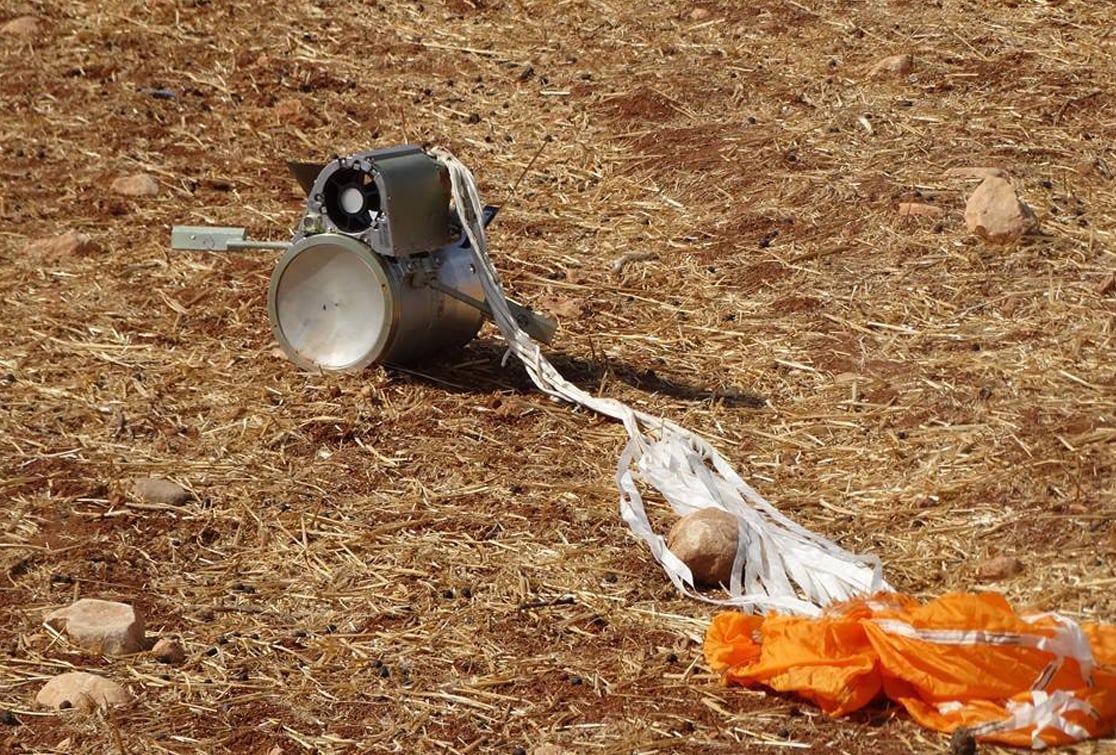No less than 54 Russian Cluster Attacks Recorded before the Cessation of Hostilities Statement

SNHR has published a report entitled “Russian Forces are Pouring Cluster Munition over Syria”. The report draws upon 21 accounts by eyewitnesses, survivors, and local media activists that SNHR contacted.
The report sheds light on the incidents of cluster munition use that have been documented from the beginning of the Russian military action in Syria until the commencement of Cessation of Hostilities statement on 27 February 2016. This, however, doesn’t mean that Russian forces have ceased the use of cluster munitions after the Cessation of Hostilities was put into effect.
The report notes that Russian forces disregarded the resolution of the United Nations General Assembly on the condemnation of the use of cluster munitions to a greater extent than the Syrian regime. We recorded 54 Russian attacks during the period of time covered in the report.
The report divides the attacks into 51 attacks that were carried out in areas controlled by armed opposition factions where mostly of these attacks took place in Aleppo and Idlib governorates while the remaining three attacks were in ISIS-held areas in Deir Ez-Zour and Al-Raqqa governorates.
According to the report, 52 civilians were killed in these attacks including 13 children and seven women. Additionallyb, 145 others were injured.
Fadel Abdul Ghani, chairman of SNHR, says:
“It seems that the Syrian lands are blatantly used as a testing ground where the Russian weapons and its effectiveness are tested. No action has been taken against the use of cluster munition by Russian forces or haven’t been even condemned. Apparently, Russian forces have used huge amounts of cluster munitions that are estimated to be tens of thousands of small bombs in a few months. Most of these bombs were directed against areas populated by Syrian citizens. The proper disposal of the remnants will require long decades and will cause injuries among citizens. The international community must aid Syrians with the necessary expertise and equipment in order to dispose the submunitions that haven’t exploded yet.”
The report describes the use of cluster munitions by Russian forces as a violation of the principles of distinction and proportionality that are established in the international humanitarian law. The incidents included in this report constitute war crimes especially that evidences suggest that cluster munition were used against civil targets rather than to accomplish specific military objects.
The report recommends that Russia must immediately cease the use and manufacture of cluster munitions in Syria and start to destroy its arsenal of cluster munition and join the Convention on Cluster Munitions.
The report demands that the Russian government publishes detailed maps that illustrate the sites where cluster attacks occurred and make these maps available for the United Nations and the Syrian community which will facilitate the process of the disposal of the remnants that didn’t explode yet. Furthermore, the report demands that reparations be insured to the Syrian society for the material and moral damages and particularly to the victims and their families.
Also, the report demand the Security Council adopts a resolution particularly on the prohibition of cluster munitions in Syria akin to what happened with the chemical weapons. Moreover, the fact that Russia is a permanent member of the Security Council must not impede Russia from being held accountable by the Security Council itself. Otherwise, the Security Council will lose its remaining credibility.
The report emphasizes that the Friends of Syria group condemns the use of cluster munitions against the Syrian people by the Russian forces and to press on Russia to cease its ongoing and repeated violations which implies that this is a policy for the Russian State.
Finally, the report calls on the Human Rights Council and the International Independent Commission of Inquiry on the Syrian Arab Republic to conduct extensive studies on the sites where cluster munitions were used by Russian forces to warn the residents of these areas and accelerate the process of the disposal of cluster remnants.


